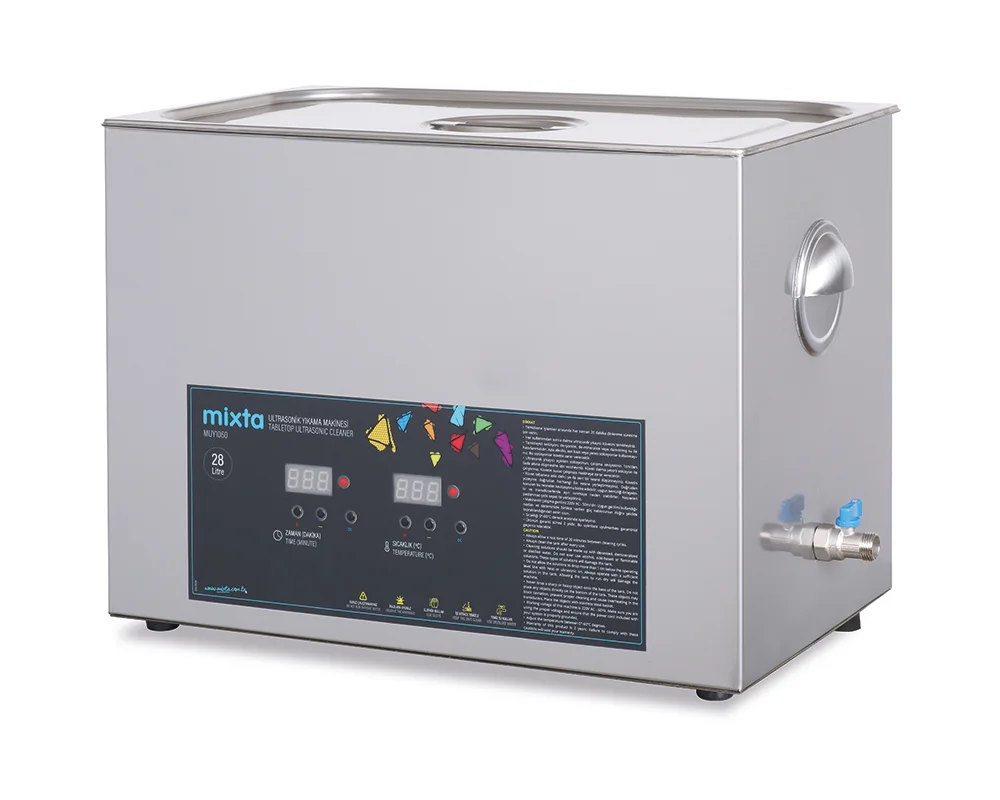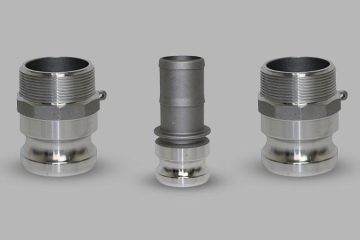Introduction
Ever wondered if there’s an easier way to get your precious jewelry, delicate instruments, or intricate machinery parts sparkling clean without damaging them? Enter the world of tabletop ultrasonic cleaners. These compact yet powerful devices have revolutionized the cleaning process, providing a gentle yet thorough clean for various items, all at the push of a button. In this blog post, we’ll explore how ultrasonic cleaners work, their incredible benefits, and how they can fit seamlessly into your cleaning routine. Whether you’re a jeweler, a hobbyist, or just someone who loves keeping things pristine, this guide will illuminate the path to effortless cleanliness.
What is an Ultrasonic Cleaner?
Ultrasonic cleaners are devices that use high-frequency sound waves to produce microscopic bubbles in a cleaning solution. These bubbles implode upon contact with surfaces, effectively loosening dirt, grime, and even microscopic contaminants from items submerged in the cleaner. This process, known as cavitation, is powerful enough to reach every nook and cranny of an item, ensuring a comprehensive clean.
The beauty of ultrasonic cleaners lies in their ability to clean without harsh scrubbing or chemicals. The gentle process preserves the integrity of delicate items, making it ideal for cleaning jewelry, eyewear, dental instruments, and even small engine parts. For small businesses and personal use, tabletop models offer convenience and efficiency, combining professional-grade cleaning power with accessibility and ease of use.
How Do Tabletop Ultrasonic Cleaners Work?
Tabletop ultrasonic cleaner consist of a stainless steel tank, transducers that convert electrical energy into ultrasonic waves, and a control panel for setting the cleaning cycle’s duration and temperature. The cleaning solution, usually water mixed with a mild detergent, is poured into the tank, and the items to be cleaned are submerged.
Upon activation, the transducers emit ultrasonic waves through the solution, creating millions of cavitation bubbles. These tiny bubbles collapse on the surface of the submerged items, dislodging particles and contaminants. This method ensures a thorough clean, reaching into crevices and intricate details that traditional cleaning methods might miss.
These devices typically offer adjustable settings to cater to different cleaning needs. Users can set the cleaning duration and temperature, ensuring that each item receives the appropriate treatment. The convenience and precision of tabletop ultrasonic cleaners make them popular in various industries, from healthcare to automotive, and even in households looking for an effective cleaning solution.
Benefits of Using Ultrasonic Cleaners
The advantages of using ultrasonic cleaners extend beyond achieving a spotless finish. Firstly, these devices save time and effort. Manual cleaning, especially of intricate items, can be labor-intensive and time-consuming. Ultrasonic cleaners automate the process, allowing users to focus on other tasks while the machine works its magic.
Secondly, ultrasonic cleaning is eco-friendly. By requiring only a small amount of mild detergent mixed with water, these cleaners minimize the need for harsh chemicals, reducing environmental impact. Furthermore, the durability and longevity of items cleaned with ultrasound technology are preserved, making it a sustainable option.
Lastly, ultrasonic cleaners provide versatility. They can accommodate a wide range of items, from jewelry and eyeglasses to dental tools and automotive components. This adaptability makes them a valuable tool for both personal and professional cleaning needs.
Choosing the Right Tabletop Ultrasonic Cleaner
Selecting the right tabletop ultrasonic cleaner depends on your specific needs. Consider the size of the items you plan to clean. Ensure that the cleaner’s tank is large enough to accommodate them fully submerged. The power and frequency of the ultrasonic waves are also crucial factors. Higher frequencies are better suited for delicate items, while lower frequencies are effective for more robust cleaning tasks.
Ease of use is another consideration. Look for models with intuitive controls and settings that match your cleaning requirements. Some units offer additional features like a built-in heater, which can enhance the cleaning process by increasing the solution’s effectiveness.
Finally, consider the reputation of the manufacturer and the availability of customer support. A reliable brand with positive reviews and accessible after-sales service can provide peace of mind and assurance of quality.
Using Your Tabletop Ultrasonic Cleaner Effectively
To get the most out of your ultrasonic cleaner, follow these simple steps. Start by ensuring the items you wish to clean are compatible with ultrasonic cleaning. Delicate items like pearls or porous stones should be avoided, as the process may damage them.
Fill the tank with the appropriate cleaning solution, ensuring it covers the items completely. Set the desired cleaning cycle duration and temperature. If your model includes a heater, allow it to heat the solution before activating the ultrasonic function.
Once the cycle is complete, carefully remove the items, rinse them with clean water, and gently dry them with a soft cloth. Regular maintenance of the cleaner itself, such as wiping down the tank and ensuring the transducers are in good working order, will help extend its lifespan and maintain performance.
Common Applications for Ultrasonic Cleaners
Ultrasonic cleaners find applications in a variety of fields due to their versatility and efficiency. In the jewelry industry, they are used to restore the shine of precious metals and gemstones without causing damage. Optical shops use ultrasonic cleaners to remove smudges and residues from eyeglasses and lenses, ensuring crystal-clear vision.
In healthcare, these devices sanitize surgical instruments, dental tools, and laboratory equipment, meeting hygiene standards with ease. Automotive workshops use ultrasonic cleaners to degrease engine parts, carburetors, and other components, enhancing performance and longevity.
The adaptability of ultrasonic cleaners to different tasks makes them indispensable across industries, providing solutions that elevate both cleanliness and convenience.
Caring for Your Ultrasonic Cleaner
Proper care and maintenance of your ultrasonic cleaner will ensure it continues to deliver optimal performance. After each use, clean the tank and remove any debris or residue. Regularly check the transducers for any signs of wear or damage, as these components are crucial to the cleaner’s functionality.
Ensure the power supply and control panel remain dry and free from moisture to prevent electrical issues. Finally, periodically use a calibration piece to test the cleaner’s efficiency and make adjustments as needed.
By maintaining your ultrasonic cleaner, you’ll enjoy consistent, effective cleaning results for years to come.
Understanding Cavitation in Ultrasonic Cleaning
Cavitation is the heart of ultrasonic cleaning, a phenomenon where tiny bubbles form and implode in a liquid. This process generates shock waves that dislodge contaminants from surfaces, achieving an unparalleled level of cleanliness.
The intensity and frequency of cavitation depend on several factors, including the ultrasonic wave frequency and the viscosity of the cleaning solution. High-frequency waves produce smaller, more numerous bubbles, ideal for delicate items, while lower frequencies generate larger bubbles suitable for heavy-duty cleaning.
Understanding cavitation helps users optimize their cleaning process, ensuring each item receives the appropriate treatment for its condition and material.
Debunking Myths About Ultrasonic Cleaning
Ultrasonic cleaning is surrounded by misconceptions that may deter potential users. One common myth is that ultrasonic cleaners use harsh chemicals, damaging sensitive items. In reality, the cleaning solution is typically mild, and the cavitation process does the heavy lifting without abrasive scrubbing.
Another myth is that ultrasonic cleaning works instantly. While the process is faster than manual cleaning, it still requires a set cycle to achieve optimal results. Users should allow the machine to complete its cycle for the best outcome.
By debunking these myths, we can appreciate the true potential of ultrasonic cleaners and make informed decisions about their use.
Conclusion
Tabletop ultrasonic cleaners are a game-changer for anyone seeking a convenient, efficient, and eco-friendly cleaning solution. By harnessing the power of cavitation, these devices deliver exceptional results, preserving the integrity and extending the lifespan of your cherished items.
Whether you’re a professional jeweler, a healthcare provider, or a DIY enthusiast, an ultrasonic cleaner can transform your cleaning routine, providing the peace of mind that comes with knowing your items are immaculately clean.
Ready to experience the magic of ultrasonic cleaning for yourself? Explore available options and find the perfect model to suit your needs, unlocking a new level of cleanliness that will leave you and your items shining brightly.




